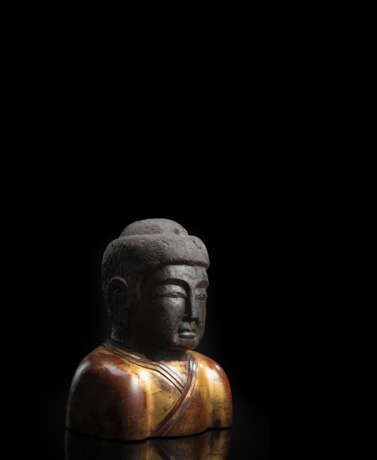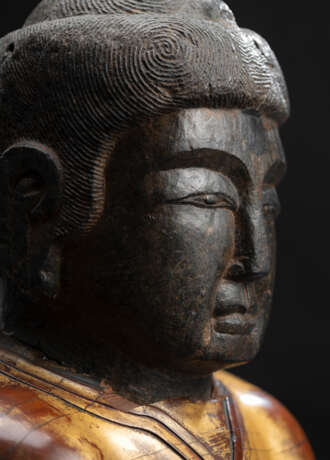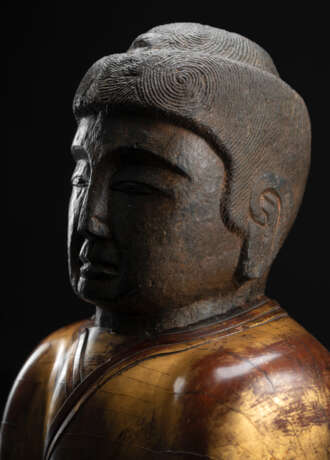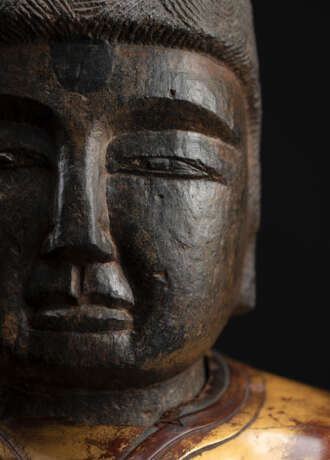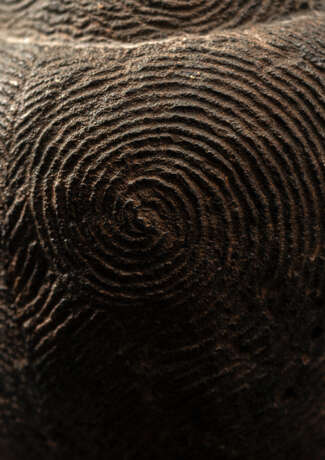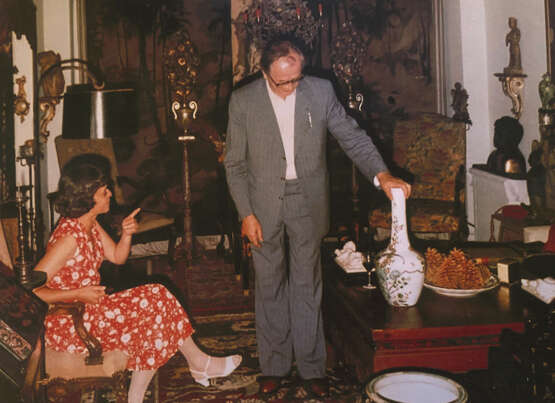ID 972551
Лот 293 | Seltene Büste des Buddha Shakaymuni
Оценочная стоимость
€ 10 000 – 15 000
H. 32/45 cm
Zweiteilige Büste mit Kopf des Buddha Shakyamuni aus Stein, der vermutlich ins 8./9. Jh. datiert wird. Feine Gesichtszüge mit niedergeschlagenen Augen unter gewölbten Augenbrauen, die in den Nasenrücken übergehen über einem geschlossenen Mund mit vollen Lippen. Das Haar in spiralförmigen Locken gekämmt mit niedriger 'usnisha' mit 'ratna'. Der Stand in Form der Brustpartie mit seitlich angeschnittenen Armen aus Holz mit partiell goldfarbener Lackfassung.
| Категория аукционного дома: | Искусство Азии |
|---|
| Категория аукционного дома: | Искусство Азии |
|---|
| Адрес торгов |
Nagel Auktionen GmbH Neckarstrasse 189 - 191 70190 Stuttgart Германия | ||||||||||||||
|---|---|---|---|---|---|---|---|---|---|---|---|---|---|---|---|
| Предосмотр |
| ||||||||||||||
| Телефон | +49 (0)711 649 690 | ||||||||||||||
| Факс | +49 (0)711 649 69696 | ||||||||||||||
| Комиссия | 29,5% | ||||||||||||||
| Условия использования | Условия использования | ||||||||||||||
| Часы работы | Часы работы
|


